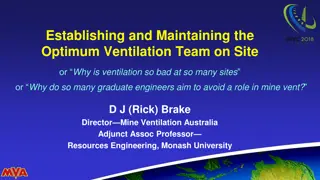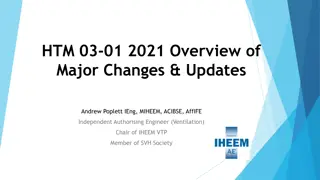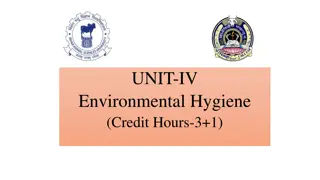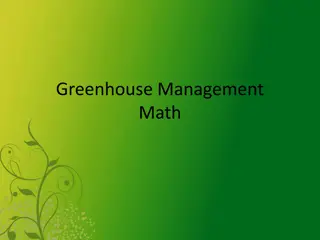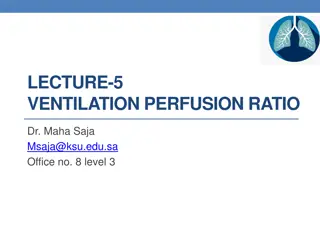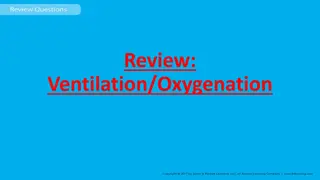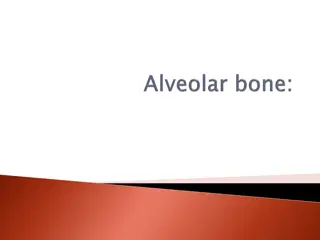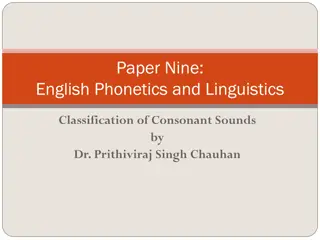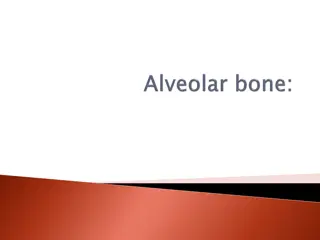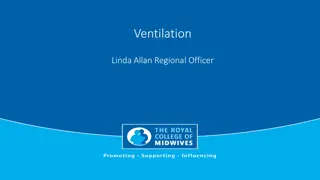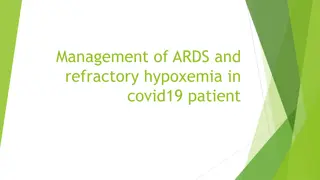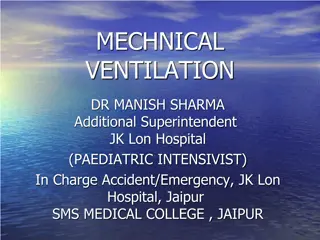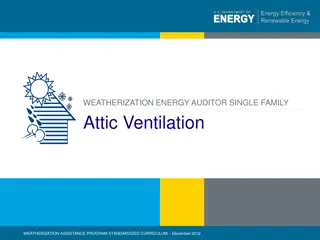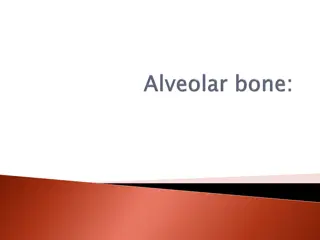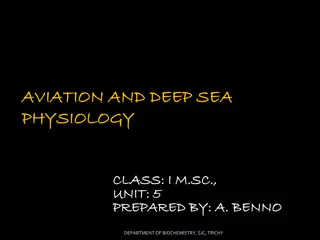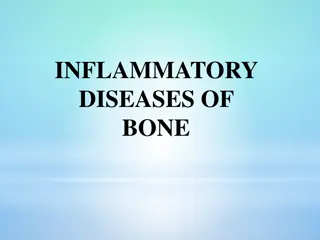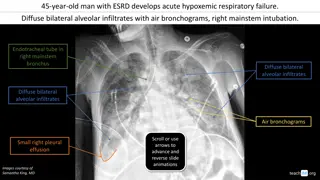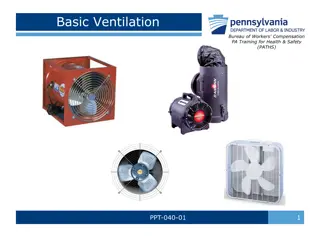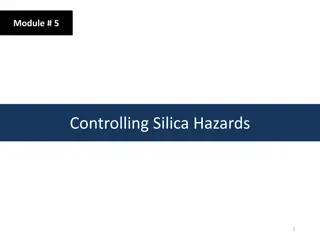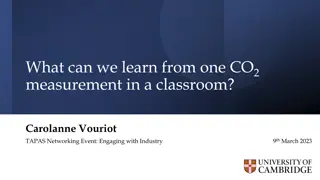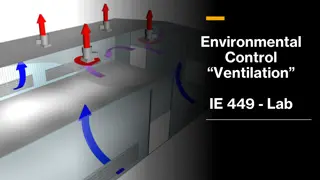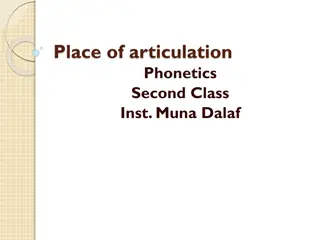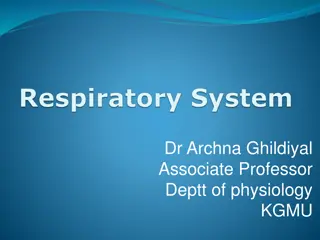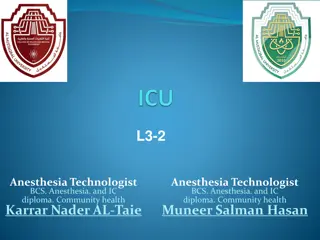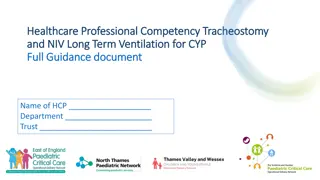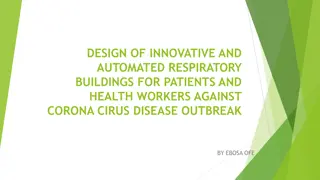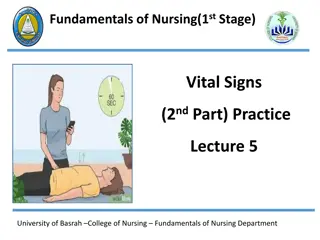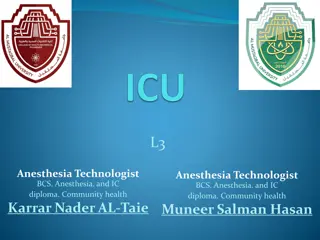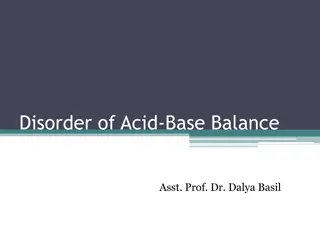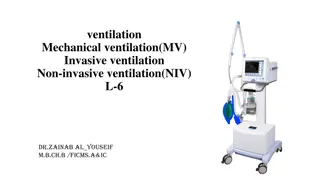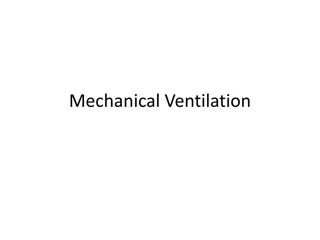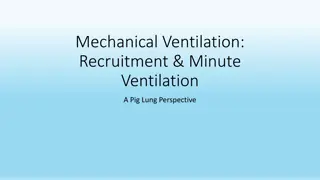Functions of the Respiratory System and Ventilation Mechanism
The respiratory system performs crucial functions such as ventilation to facilitate gas exchange, maintaining pH balance, and enabling vocal sounds. It consists of the upper and lower respiratory systems, including structures like the nose, trachea, bronchi, and alveoli. The system's epithelium, the
7 views • 43 slides
Overview of Mechanical Ventilation in Critical Care
Discussing the indication, modes, variables, and controls of mechanical ventilation as well as the differences between volume and pressure control. Exploring assist control, synchronized intermittent mandatory ventilation, and other key aspects of ventilator management by Dr. Zia Arshad.
0 views • 22 slides
Enhancing Mine Ventilation for Optimal Performance
Discover the key role of ventilation in mining operations, debunking misconceptions about its importance. Learn how good ventilation practices contribute value to a mine, improve safety, reduce costs, and boost productivity. Explore the crucial considerations in establishing and maintaining an effic
0 views • 26 slides
Overview of HTM 03-01-2021 Major Changes & Updates in Healthcare Ventilation Systems
This overview covers the major changes and updates in healthcare ventilation systems as per HTM 03-01-2021. It emphasizes the shift towards net-zero carbon emissions by 2050, promoting sustainable ventilation practices. Key aspects include the role of Ventilation Safety Groups, derogation processes,
0 views • 21 slides
Proper Ventilation for Animal Houses: Importance and Guidelines
Ventilation in animal houses is crucial for removing stale air and replacing it with fresh air to maintain optimal conditions for animals and their attendants. Improper ventilation can lead to various issues like high humidity, disease spread, and vulnerability to pathogens. This article discusses t
0 views • 12 slides
Greenhouse Management and Temperature Control Guide
Learn about the importance of ventilation and temperature control in greenhouse management, including how to calculate required ventilation and heater size. Understand the benefits of proper ventilation, ways to control greenhouse temperature, and essential considerations for heating. Explore step-b
1 views • 21 slides
Comprehensive Overview of Pulmonary Function Tests (PFTs)
Pulmonary Function Tests (PFTs) are vital for assessing pulmonary gas exchange through ventilation, diffusion, and lung perfusion. These tests include measurements of lung volume, airway patency, gas exchange efficacy, and pulmonary blood flow. PFTs offer benefits in diagnosing dyspnea, monitoring d
0 views • 14 slides
Understanding Ventilation-Perfusion Ratio in Pulmonary Circulation
This lecture delves into the intricate relationship between ventilation and perfusion in the lungs, highlighting the importance of proper gas exchange for optimal respiratory function. It discusses the circulations supplying the lungs, defines the V/Q ratio, and explores the clinical significance of
0 views • 25 slides
Understanding Ventilation and Oxygenation in Respiratory Care
Review covers key concepts of ventilation and oxygenation, including the control of breathing, assessment of tidal volume, and the roles of different respiratory centers. Learn about the importance of observing chest rise to assess tidal volume accurately. Gain insights into the brain stem's pivotal
6 views • 41 slides
Understanding the Role of Alveolar Process in Dental Development
The alveolar process in the upper and lower jaw plays a vital role in housing, supporting, and protecting teeth. It anchors tooth roots, facilitates tooth movement for proper occlusion, absorbs and distributes occlusal forces, supplies vessels to the periodontal ligament, and aids in tooth eruption.
1 views • 28 slides
Understanding English Consonant Sounds: A Detailed Guide
This guide delves into the English phonetics and linguistics classification of consonant sounds, emphasizing factors such as place of articulation and manner of articulation. It covers various types of consonant sounds, from bilabial and labio-dental to alveolar, post-alveolar, palatal, velar, and g
1 views • 11 slides
Structure and Functions of the Alveolar Process in Jaw Anatomy
The alveolar process in the upper and lower jaw is responsible for housing the roots of teeth, supporting tooth eruption, providing attachment for facial muscles, and aiding in mastication. During fetal development, the alveolar process forms and separates tooth germs, leading to the differentiation
3 views • 26 slides
Importance of Ventilation in the Workplace Environment
Adequate ventilation plays a crucial role in reducing the risk of virus transmission, particularly aerosols, in enclosed areas like workplaces. This presentation highlights the significance of ventilation and how health and safety representatives can collaborate to address concerns. It also discusse
0 views • 20 slides
Effective Management of ARDS and Refractory Hypoxemia in COVID-19 Patients
Management of ARDS involves oxygen support and mechanical ventilation along with treating the underlying cause. Lung-protective ventilation strategies such as the OLA approach are recommended. Refractory hypoxemia in COVID-19 patients is challenging, often requiring adherence to ARDS guidelines. Mai
2 views • 28 slides
Understanding Mechanical Ventilation in Critical Care Environments
Mechanical ventilation, overseen by Dr. Manish Sharma, Pediatric Intensivist at JK Lon Hospital, Jaipur, is essential for treating respiratory failure. It involves using ventilators to deliver gas to the lungs and meet specific goals like correcting hypoxemia and hypercapnia. This process requires u
0 views • 55 slides
Comprehensive Guide to Attic Ventilation for Weatherization Energy Auditors
Explore the purpose, principles, and misconceptions surrounding attic ventilation in single-family homes as part of a weatherization assistance program. Learn about common misconceptions, post-weatherization moisture problems, and passive attic venting techniques using informative visuals provided b
0 views • 23 slides
Brooding and Broiler Production: Essential Factors for Chicken Rearing
Brooding and broiler production play a crucial role in egg production. Incubation of chicks, heat regulation, ventilation, space, disease prevention, and nutrition are key factors controlled by humans for successful chicken rearing. Chicks require proper incubation conditions, including heat sources
0 views • 30 slides
Understanding the Role of Alveolar Process in Dental Support
The alveolar process in the upper and lower jaw plays a crucial role in supporting teeth, anchoring them to the alveoli with Sharpey's fibers. It helps in tooth movement for proper occlusion, absorbs and distributes occlusal forces, supplies vessels to the periodontal ligament, and protects both pri
2 views • 42 slides
High-Altitude Physiology and Its Effects on the Human Body
Understanding the impact of high altitudes on human physiology is crucial for aviation and deep-sea activities. Barometric pressures and alveolar oxygen levels change significantly with altitude, leading to hypoxia-related issues. Factors like carbon dioxide and water vapor further affect alveolar o
1 views • 29 slides
Overview of Inflammatory Diseases of Bone
Inflammatory diseases of bone encompass conditions like osteitis, osteomyelitis, periostitis, and alveolar osteitis (dry socket). Osteitis is localized and may be associated with infected sockets, while osteomyelitis involves the interior of the bone. Alveolar osteitis commonly follows tooth extract
0 views • 20 slides
Acute Respiratory Failure in ESRD Patients with Diffuse Bilateral Alveolar Infiltrates
In a 45-year-old male with end-stage renal disease (ESRD) and acute hypoxemic respiratory failure, diffuse bilateral alveolar infiltrates with air bronchograms were noted, including right mainstem intubation. Correct positioning and management steps for endotracheal tube placement were discussed. Ad
0 views • 4 slides
Basic Ventilation Training for Health & Safety
This training presentation covers the basic concepts of ventilation, including reasons for ventilation, proper techniques, student objectives, types of ventilation, methods of ventilation, and ventilation safety precautions. Ventilation is crucial for maintaining high-quality indoor air, removing un
5 views • 22 slides
Controlling Silica Hazards: Effective Engineering Controls
Techniques for controlling silica hazards in the workplace include elimination, substitution, and engineering controls like ventilation, dust containment systems, wet methods, and housekeeping practices. Elimination involves removing silica exposure risks, while substitution replaces risky materials
1 views • 21 slides
Insights from CO2 Measurement in Classroom Ventilation
Understand the significance of CO2 measurements in classroom ventilation for better indoor air quality and reduced infection risks. Explore the use of CO2 sensors, data analysis, and proxy models to improve ventilation systems in schools. Discover findings on airborne infection risk and variations w
2 views • 9 slides
Understanding Industrial Ventilation Systems for Workplace Safety
Ventilation plays a crucial role in maintaining a safe working environment by providing fresh air, controlling contaminants, and reducing health risks for workers. This article covers the importance of ventilation, areas at risk of deficiency, components of industrial systems, types of ventilation s
0 views • 18 slides
Overview of Second Class Instinctive Place of Articulation in Phonetics
Place of articulation in phonetics refers to the location where speech sounds are obstructed. There are 8 types of place of articulation, including bilabial, labio-dental, dentals, alveolar, palato-alveolar, palatal, velar, and glottis. Each type is characterized by the specific articulatory positio
0 views • 10 slides
Mechanics of Pulmonary Ventilation and Respiratory Cycle Explained
Understanding the mechanics of pulmonary ventilation is crucial for comprehending the breathing process. This comprehensive overview covers the role of muscles, ribs, pressure changes in alveolar, pleural, and transpulmonary regions, terms related to breathing and ventilation, and the contraction an
0 views • 31 slides
Understanding Mechanical Ventilation in Anesthesia Practice
Anesthesia technologists play a crucial role in managing artificial ventilation, including concepts like Invasive Positive Mechanical Ventilation (IPMV), Fraction of Inspired Oxygen (FIO2), Tidal Volume (VT), Peak Flow Rate, Respiratory Rate, Minute Volume (VE), I:E Ratio, and more. They monitor and
0 views • 27 slides
Understanding the Respiratory System Components and Functions
The respiratory system consists of two primary subdivisions: the Air Conducting portion and the Respiratory portion. The Air Conducting portion includes nasal cavity, naso-pharynx, larynx, trachea, bronchi, bronchioles, and terminal bronchioles, providing a pathway to and from the lungs while condit
0 views • 12 slides
Healthcare Professional Competency: Tracheostomy and Long-Term Ventilation for Children and Young People
This document provides guidance for healthcare professionals caring for children and young people requiring tracheostomy and long-term ventilation. Developed by experts in pediatric care, the competencies cover essential skills and knowledge necessary for safe and effective patient care outside tert
0 views • 16 slides
Innovative Automated Respiratory Buildings for Corona Virus Outbreak
Ebosa Ofe presents a pioneering design of automated respiratory buildings aimed at safeguarding patients and health workers against the Corona virus outbreak. The buildings utilize advanced ventilation systems to ensure a safe and healthy environment, combating the spread of COVID-19. Explore the co
0 views • 12 slides
Understanding Respiratory Rate and Ventilation in Nursing Practice
This lecture focuses on the vital signs related to respiratory rate, emphasizing the three processes of respiration: ventilation, diffusion, and perfusion. Nurses assess ventilation by observing the rate, depth, and rhythm of respiratory movement, crucial in recognizing normal thoracic and abdominal
0 views • 51 slides
Understanding Mechanical Ventilation in Anesthesia Technology
Mechanical ventilation plays a crucial role in assisting patients with breathing difficulties by delivering oxygen and removing carbon dioxide. It involves two primary types: Negative Pressure Ventilation (NPV) and Positive Pressure Ventilation (PPV). NPV helps patients with conditions like chronic
0 views • 19 slides
Understanding Acid-Base Balance Disorders: Respiratory Acidosis Overview
Acid-base balance disorders manifest as metabolic and respiratory imbalances with distinct characteristics. Respiratory acidosis, a common condition, stems from impaired alveolar ventilation, leading to elevated CO2 levels and decreased pH. It can be acute or chronic, each presenting unique features
0 views • 16 slides
Ventilation in Critical Care: Basics and Calculations
Understanding mechanical ventilation is crucial in managing critically ill patients. This content covers concepts like I:E ratio, total cycle time calculation, inspiratory and expiratory times, and practical examples. Learn how to adjust ventilator settings based on patient parameters and conditions
0 views • 11 slides
Understanding Bone Destruction in Periodontal Disease
The progression of periodontal disease can lead to bone destruction in the alveolar bone, which is crucial in supporting teeth. The inflammatory process causes permanent damage to the periodontium tissues, resulting in connective tissue loss and bone resorption. Different patterns of bone loss, such
0 views • 14 slides
Understanding Mechanical Ventilation in COPD Exacerbation
In a case of a 64-year-old woman with COPD exacerbation, managing respiratory distress is crucial. Initiating systemic corticosteroids, doxycycline, and nebulizers while closely monitoring the patient is important. However, in cases where non-invasive ventilation is ineffective, the patient may requ
0 views • 22 slides
Understanding Mechanical Ventilation in a Pig Lung Perspective
Explore recruitment strategies, minute ventilation concepts, and optimization techniques in mechanical ventilation from a unique pig lung perspective. Learn about benefits, recommended PEEP levels, driving pressure, goals of ventilation, and the concept of permissive hypercapnia in respiratory care.
0 views • 14 slides
Temporary Ventilation Project Overview and Challenges
The FE Minute provides an overview of a temporary ventilation project managed by Elisabete Godden, aiming to enhance air flow in classrooms without mechanical ventilation to combat the COVID pandemic. The project involves installing ventilation systems at various spaces within 20 days with a budget
0 views • 14 slides
Design Strategies for Buildings in the UK: A Literature Review
The literature review explores design strategies for buildings in the UK, focusing on ventilation systems, building regulations, and approved document guidelines. Various ventilation systems are discussed, including background ventilators, passive stack ventilation, and mechanical ventilation with h
0 views • 11 slides


